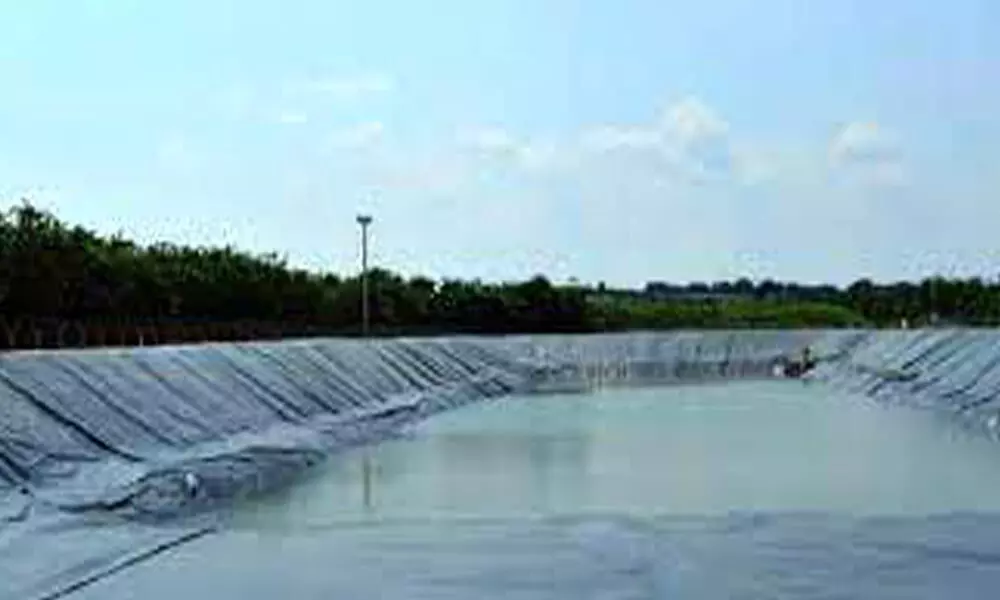Toyota Kirloskar meets water needs thro' RWH
It has installed a state-of-the-art wastewater treatment plant that allows to reuse 70-85 per cent of wastewater. In the year 2019-20, it has consumed 303.378 million litres of recycled water in its operations
image for illustrative purpose

Mumbai: Toyota Kirloskar Motor (TKM), which has got its plants located in Mumbai and Pune, has installed production capacity of 3,10,000 units per annum has been meeting 95 per cent of its water consumption requirements through recycled and rain water harvesting.
Toyota, a mobility leader has 'Global Environment Challenge 2050' a goal of creating a net positive impact by 2050, has aligned its recent activities with environmental suitability and reduced resource consumption. Under which it has challenge of minimising and optimising water usage, which allows implementing measures, on a priority basis, in regions where the environment is considered to have a large impact.
With 'Reduce, Reuse, Recycle' approach towards water, the company has constructed rainwater harvesting systems with a capacity of 51,000 cu mt. In this reporting year, it has utilised 43.347 million litres of harvested rainwater in production.
It has installed a state-of-the art wastewater treatment plant that allows to reuse 70-85 per cent of wastewater. In the year 2019-20, it has consumed 303.378 million litres of recycled water in its operations.
Rainwater is passed through a Reverse Osmosis filtration system. The processed water is used for industrial procedures as well as in the domestic space, says a report by India CSR with reference to the company's annual sustainability report 2020.
The rainwater is collected in a small pond. The water collected is then used to wash the cars at most of its dealerships. Rainwater is also used to recharge the borewells. Recycled water is reused for vehicle washing and plantation activities at certain dealer outlets.
The industrial requirement of water is 321.9 ML/yr. Domestic need of water is 207.4 ML/yr and miscellaneous need of water for gardening and toilet flushing is 234.3 ML/yr.
TKM has introduced water-borne paint technology at dealerships. Through the water-borne painting process, up to 90 per cent of the hazardous solvent is replaced by water and a ready-to-use base coat paint mixture which reduces the overall VOC levels by up to 47 per cent.
Servicing vehicles needs a large quantity of water, with an average consumption of about 150 litre/vehicle. To work towards water conservation, it has introduced the innovative 'Eco Wash'. This is a technique which eliminates nearly 99 per cent of water usage without compromising on the quality of cleanliness.
In FY 2020, about 60 per cent of dealerships used Eco Wash, a huge leap from the mere 8 per cent in 2014. This is mainly seen in major cities and helps dealerships to comply with the local regulations under the Water Act.
According to the World Resources Institute, 54 per cent of the Indian geography faces high to extremely high water-stress. Toyota sourced water primarily from the Cauvery river basin, a single dry season or water shortage could greatly affect its industrial water supply. Keeping in mind, the company prioritises water conservation and wastewater treatment and makes multiple efforts to deal with water scarcity to create a positive impact on the community.
It is utilising 94 per cent of green energy and recycling 96 per cent of generated waste in an authorised way.
The company is mitigating their impact on the environment, and also proactively contributing to the betterment of it by educating 6,511 children on the topic of sustainable development in its one-of-a-kind experiential learning centre – Ecozone.
A cumulative 3,20,000 saplings have been planted inside its premises till FY 2019-20.
14,398 saplings were planted outside of TKM in June 2019 for Environment Month.
94 per cent of electricity units (of 53,976 MW/hr) sourced from renewable sources, resulting in an offset of 50,197 tons of CO2
Toyota which considers hydrogen a potential alternative fuel and is actively developing technologies to harness it from various primary sources.

